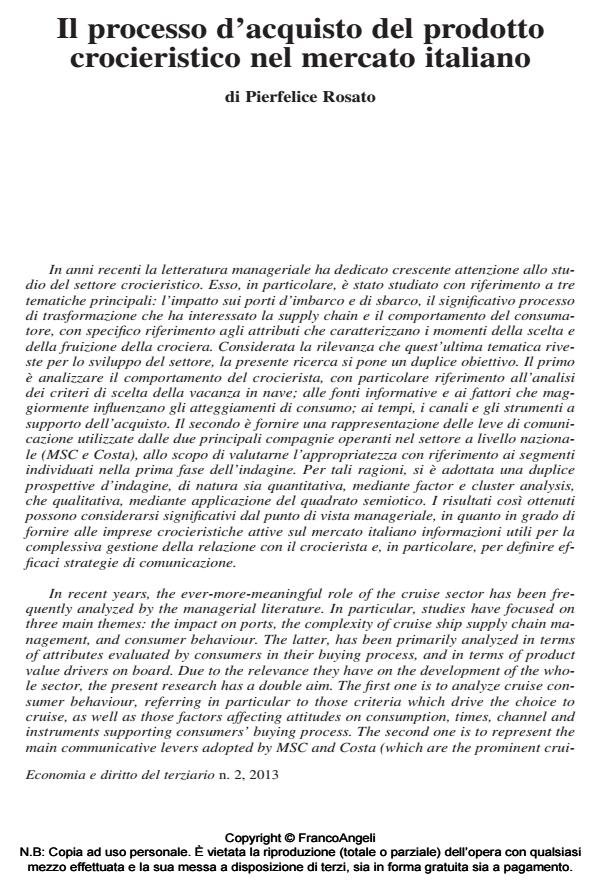Il processo d’acquisto del prodotto crocieristico nel mercato italiano
Titolo Rivista ECONOMIA E DIRITTO DEL TERZIARIO
Autori/Curatori Pierfelice Rosato
Anno di pubblicazione 2014 Fascicolo 2013/2
Lingua Italiano Numero pagine 22 P. 287-308 Dimensione file 988 KB
DOI 10.3280/ED2013-002006
Il DOI è il codice a barre della proprietà intellettuale: per saperne di più
clicca qui
Qui sotto puoi vedere in anteprima la prima pagina di questo articolo.
Se questo articolo ti interessa, lo puoi acquistare (e scaricare in formato pdf) seguendo le facili indicazioni per acquistare il download credit. Acquista Download Credits per scaricare questo Articolo in formato PDF

FrancoAngeli è membro della Publishers International Linking Association, Inc (PILA)associazione indipendente e non profit per facilitare (attraverso i servizi tecnologici implementati da CrossRef.org) l’accesso degli studiosi ai contenuti digitali nelle pubblicazioni professionali e scientifiche
In anni recenti la letteratura manageriale ha dedicato crescente attenzione allo studio del settore crocieristico. Esso, in particolare, è stato studiato con riferimento a tre tematiche principali: l’impatto sui porti d’imbarco e di sbarco, il significativo processo di trasformazione che ha interessato la supply chain e il comportamento del consumatore, con specifico riferimento agli attributi che caratterizzano i momenti della scelta e della fruizione della crociera. Considerata la rilevanza che quest’ultima tematica riveste per lo sviluppo del settore, la presente ricerca si pone un duplice obiettivo. Il primo è analizzare il comportamento del crocierista, con particolare riferimento all’analisi dei criteri di scelta della vacanza in nave; alle fonti informative e ai fattori che maggiormente influenzano gli atteggiamenti di consumo; ai tempi, i canali e gli strumenti a supporto dell’acquisto. Il secondo è fornire una rappresentazione delle leve di comunicazione utilizzate dalle due principali compagnie operanti nel settore a livello nazionale (MSC e Costa), allo scopo di valutarne l’appropriatezza con riferimento ai segmenti individuati nella prima fase dell’indagine. Per tali ragioni, si è adottata una duplice prospettive d’indagine, di natura sia quantitativa, mediante factor e cluster analysis, che qualitativa, mediante applicazione del quadrato semiotico. I risultati così ottenuti possono considerarsi significativi dal punto di vista manageriale, in quanto in grado di fornire alle imprese crocieristiche attive sul mercato italiano informazioni utili per la complessiva gestione della relazione con il crocierista e, in particolare, per definire efficaci strategie di comunicazione
Pierfelice Rosato, Il processo d’acquisto del prodotto crocieristico nel mercato italiano in "ECONOMIA E DIRITTO DEL TERZIARIO " 2/2013, pp 287-308, DOI: 10.3280/ED2013-002006